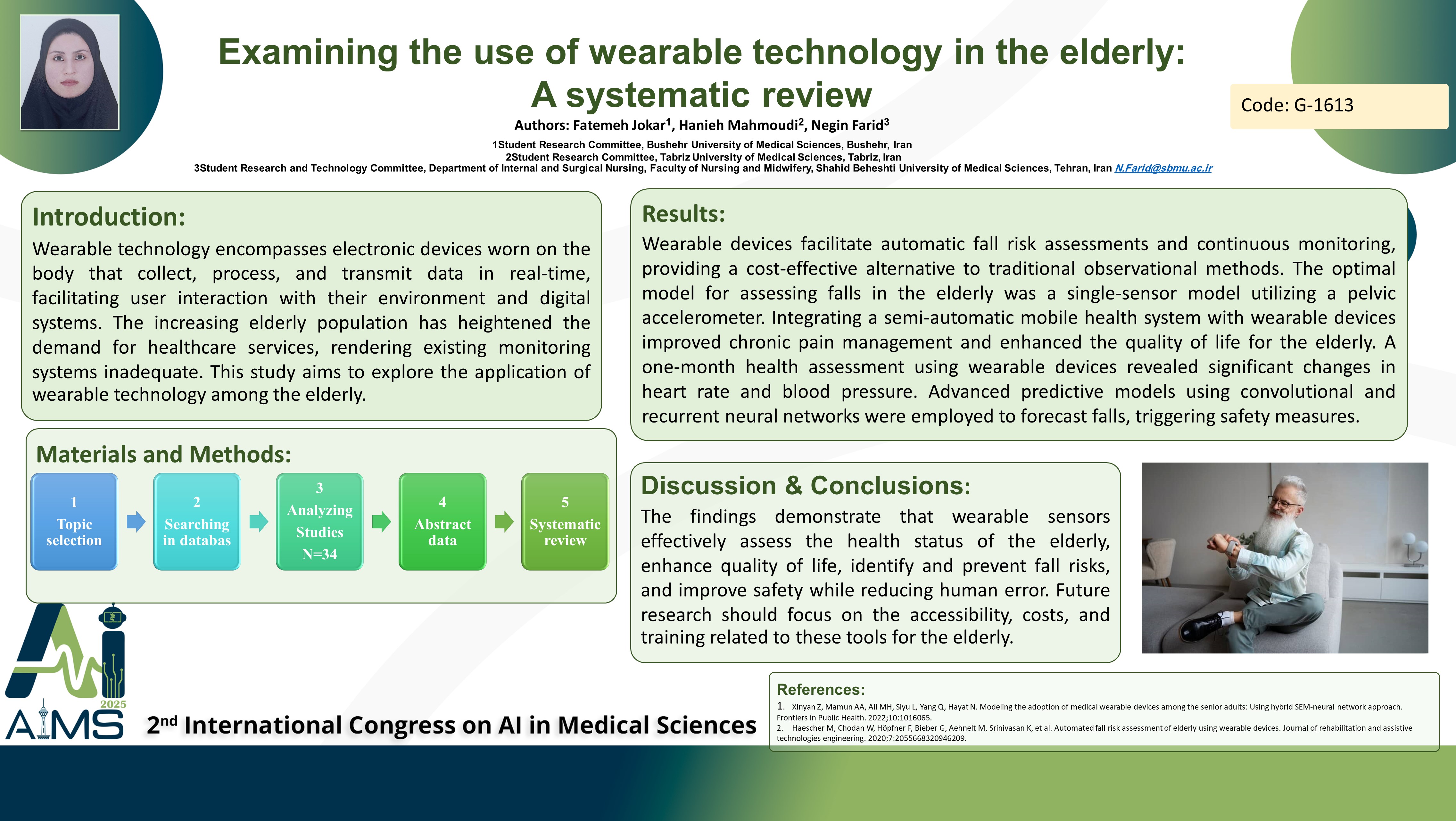بررسی کاربرد فناوری پوشیدنی در سالمندان: یک مرور نظاممند
کد: G-1613
نویسندگان: Fatemeh Jokar ℗, Hanyieh Mahmodi, Negin Farid *
زمان بندی: زمان بندی نشده!
برچسب: رباتیک در جراحی و مراقبت سلامت
دانلود: دانلود پوستر
خلاصه مقاله:
خلاصه مقاله
Background and aims: Wearable technology encompasses electronic devices worn on the body that collect, process,and transmit data in real-time,facilitating user interaction with their environment and digital systems. The increasing elderly population has heightened the demand for healthcare services, rendering existing monitoring systems inadequate. This study aims to explore the application of wearable technology among the elderly.Method: A systematic review was conducted using keywords such as "wearable technology," "elderly," and "wearable devices" across various databases,including Wos,Scopus,Pubmed/Medline, Irandoc, Magiran, Noormags, SID, and Google Scholar. Initially, 34 studies were identified. Inclusion criteria allowed for articles published in Persian or English without a time limit, while grey literature and review studies were excluded. After removing duplicates and critically appraising the studies, ten studies were analyzed. Ethical considerations were prioritized to avoid bias in selection and analysis, with the abstract reported according to PRISMA guidelines.Results: The reviewed studies identified critical factors influencing the elderly's intention to use wearable devices, including perceived trust, value for money, and vulnerability. Wearable devices facilitate automatic fall risk assessments and continuous monitoring, providing a cost-effective alternative to traditional observational methods while minimizing human error. The optimal model for assessing falls in the elderly was a single-sensor model utilizing a pelvic accelerometer, while a dual-sensor system effectively classified daily activities. Integrating a semi-automatic mobile health system with wearable devices improved chronic pain management and enhanced the quality of life for the elderly. A one-month health assessment using wearable devices revealed significant changes in heart rate and blood pressure, with participants acknowledging the effectiveness of these devices in improving health and increasing social capital (p0.05). Advanced predictive models using convolutional and recurrent neural networks were employed to forecast falls, triggering safety measures. These sensors also detected bed exits, allowing timely alarms to mitigate fall risks.Conclusion: The findings demonstrate that wearable sensors effectively assess the health status of the elderly, enhance quality of life, identify and prevent fall risks, and improve safety while reducing human error. Future research should focus on the accessibility, costs, and training related to these tools for the elderly.
کلمات کلیدی
Aged, Aging, Old Age, Wearable Devices
